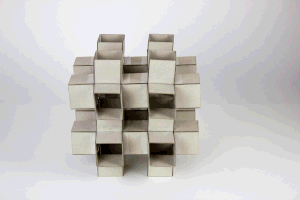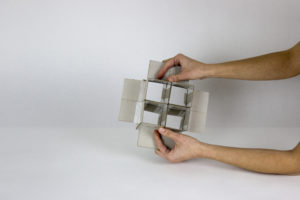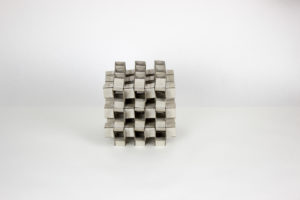
Folding of Space
The exploration and realization of monolithic yet flexible geometries are now, due to technological developments, more tangible. “Monolithic-yet-flexible“ describes the concept of compliance, where mobility is gained from the deflection of flexible members, rather than only from movable joints. Thus, compliance dispenses
with the traditional joint-concept while relying on control over the material and its reversible deflection. Structures, mechanisms, or entire objects can be constructed using this concept.
Deformations and instabilities are usually avoided in human-made engineering, as they often represent mechanical failure. The majority of existing designs are constructed on the requirement of being both stiff and strong; therefore, the distinctiveness of these properties is difficult to perceive. This results in a lack of differentiation, but stiffness and strength are not the same. Exemplary for this is the comparison between nature and human engineering.
Natural structures tend to be more flexible than human-made constructions, as human-made engineering relies on the criterion of stiffness. These structures contain a lot of material to reach stiffness. Nature’s engineering, on the other hand, tends to build on the criterion of strength while using less material. Considering movements from nature, it can be observed that they are mostly generated from bending flexible parts. Therefore, flexibility and compliance are nature’s concept for achieving movement.
However, nature’s examples show how integrating compliance into human-made engineering can lead to additional functionality. Monolithic-yet-flexible structures could improve or even add new functionalities to objects. Production methods, such as 3d printing, offer new possibilities to produce monolithic objects.





